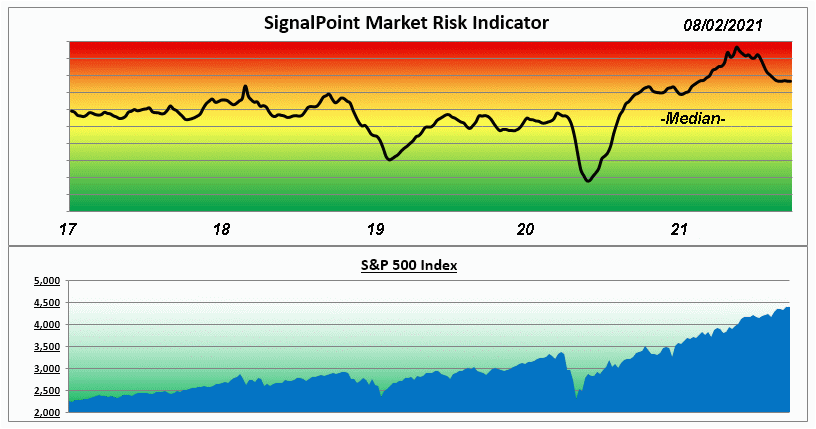From Chief Investment Officer Tom Veale,
““Big Tech” seemed to be the source of some of last week’s index behavior. The NASDAQ Composite, S&P 500 and the Dow 30 all had modest declines while the Russell 2000 rose slightly. So, smaller cap stocks continued their gains as money flowed away from the mega-caps.
The SignalPoint Market Risk Indicator (MRI) stayed steady with internal components rising and falling in equal numbers in their own risk ranges. Still higher than we’d like to see, market risk has moderated considerably with the latest round of earnings reports.

Starting in the ‘90s commission costs for stock transactions started to fall with the advent of discount brokerages. Further, the computer age made it easier and simpler to make stock transactions. The advent of individual retirement plans, some with automatic payroll deductions, made for a nearly constant but growing flow of new investment dollars directed toward stocks. Money so invested rarely is redirected as participants don’t think of their retirement accounts the same as they do a personal brokerage accounts.
While a slight rise in the average P/E since the 1990s doesn’t mean we can’t have market corrections, it does seem to be building a new base line for valuations. The supply and demand for long term investments will probably determine the future slope of the Price/Earnings line.”
Best regards,
Tom Veale



